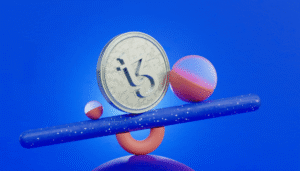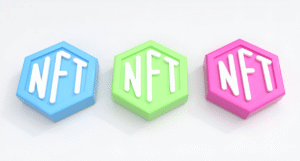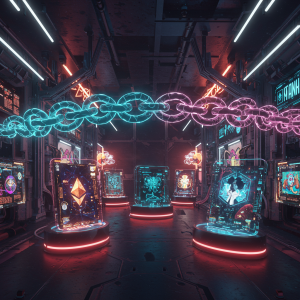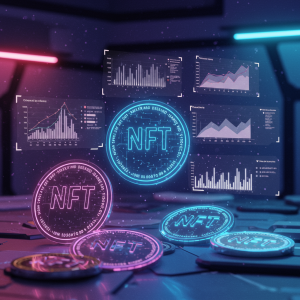Decentralized Curation: How DAOs are Redefining NFT Discovery and Valuation

The digital art world has undergone a remarkable transformation. What began as scattered collections of digital assets has evolved into complex ecosystems where value is determined not by traditional gatekeepers, but by decentralized communities with shared interests and vision.
The Broken NFT Discovery Problem
Finding meaningful NFT projects used to depend entirely on centralized platforms and influencer recommendations. This system inevitably led to market manipulation, manufactured hype, and genuine artistic innovation being overshadowed by projects with deeper marketing pockets.
Many artists with groundbreaking work remained undiscovered simply because they lacked connections to the right promotion channels. Meanwhile, collectors struggled to identify truly valuable projects amid overwhelming noise.
This disconnect between quality and visibility created perfect conditions for a revolution in how we discover and value digital assets.
Enter Decentralized Autonomous Organizations
DAOs have emerged as a powerful solution to the NFT curation challenge. Unlike traditional companies with hierarchical structures, DAOs operate through community governance where token holders collectively make decisions about everything from treasury management to content curation.
These organizations run on blockchain technology using smart contracts that automatically execute when predetermined conditions are met. This removes the need for centralized management while ensuring transparent operations that community members can trust.
When applied to NFT curation, this model creates remarkable opportunities for both creators and collectors.
How DAOs Curate NFTs Differently
Traditional curation relies on the subjective judgment of a small group of experts. DAO-based curation instead harnesses the collective intelligence of entire communities, often resulting in more diverse, representative selections that reflect broader taste and value systems.
The mechanics are elegantly simple yet powerful. Community members vote on which artworks deserve attention, with their voting power typically weighted by their stake in the organization. This creates natural incentives for good curation—members benefit directly when they identify valuable works early, as increased visibility can enhance the value of those assets.
As we’ve seen at Outbound Marketo, community-led discovery systems consistently outperform centralized alternatives in identifying overlooked talent and predicting long-term value.
Real-World Examples Transforming the Space
FlamingoDAO emerged as one of the pioneering NFT curation DAOs, pooling member resources to build a prestigious collection including early CryptoPunks and Art Blocks pieces. Their community-directed acquisition strategy demonstrated how collective wisdom could identify historically significant digital assets before mainstream recognition.
NounsDAO took a different approach, generating and auctioning one unique NFT daily with proceeds flowing to their treasury. The community then decides how to allocate these funds, often supporting emerging artists and projects that align with their aesthetic and values.
Perhaps most revolutionary is Pleasr DAO, which acquires culturally and historically significant pieces like Edward Snowden’s NFT and the original Doge meme. Their acquisitions often fractionalize ownership, democratizing access to historically important digital artifacts.
The Technology Making It Possible
Smart contracts form the backbone of DAO curation systems. These self-executing agreements with terms directly written into code eliminate the need for intermediaries and ensure that curation processes remain transparent and tamper-proof.
Token-weighted voting systems allow community members to indicate preferences without requiring perfect consensus. More sophisticated DAOs implement quadratic voting or reputation-based systems that prevent wealthy members from completely dominating decisions.
On-chain reputation systems are perhaps the most exciting development. These systems track members’ past curation decisions, building credibility scores that influence future voting weight based on proven taste rather than merely financial contribution.
Benefits for Artists and Collectors
For artists, DAO curation offers paths to recognition based on the quality of work rather than marketing budgets or insider connections. Many artists have found their first meaningful audience through DAO communities that valued their work before mainstream platforms took notice.
Collectors gain access to expert-level curation without needing to become experts themselves. By participating in curation DAOs, even newcomers can benefit from the collective knowledge of experienced collectors while gradually developing their own taste and understanding.
Both groups benefit from greater market transparency. When curation happens openly on-chain, price manipulation and artificial hype become much harder to sustain.
Challenges in Decentralized Curation
Despite their promise, curation DAOs face significant challenges. Governance participation often suffers from the same issues seen in traditional voting systems—apathy can lead to low turnout, giving disproportionate power to highly engaged minorities.
Balancing accessibility with quality control presents another dilemma. Too many barriers to entry can recreate the exclusivity problems of traditional art worlds, while too few may lead to spam and low-quality submissions overwhelming the system.
Cultural biases also persist even in decentralized systems. Communities naturally form around shared aesthetic preferences, which can inadvertently create new forms of exclusion if not actively addressed.
The Future of Decentralized NFT Curation
As these systems mature, we’re seeing emergence of specialized curation DAOs focused on specific artistic movements, mediums, or cultural contexts. This specialization allows for more nuanced evaluation of works within their appropriate context.
Cross-DAO collaboration networks are beginning to form, creating discovery pathways that span multiple communities. These networks help surface works that might resonate beyond their origin community, increasing exposure for deserving artists.
Perhaps most exciting is the development of AI-augmented curation tools that work alongside human curators. These systems can process vast amounts of market data and stylistic information while leaving subjective quality judgments to community members.
Building Better Discovery Systems
For those interested in participating in or creating curation DAOs, several principles have proven effective. Successful systems usually start with clearly defined curation criteria—not to restrict creativity, but to provide a shared vocabulary for discussing artistic merit.
Progressive decentralization allows new organizations to move carefully from more controlled initial curation toward increasingly community-driven processes as membership grows and stabilizes.
The most resilient DAOs implement multi-layered review processes that combine algorithmic filtering, community voting, and expert panels in complementary ways, creating balanced systems that resist gaming while remaining open to innovation.
Conclusion
Decentralized curation represents a fundamental shift in how we discover and value digital art. By replacing traditional gatekeepers with community governance, DAOs are creating more transparent, accessible, and diverse pathways for artists to find recognition and for collectors to discover meaningful work.
As these systems continue to evolve, they promise to address longstanding inequities in creative economies while building more sustainable models for artistic patronage and collection. The future of digital art discovery isn’t just decentralized—it’s collectively curated by the very communities that care most deeply about its development.








